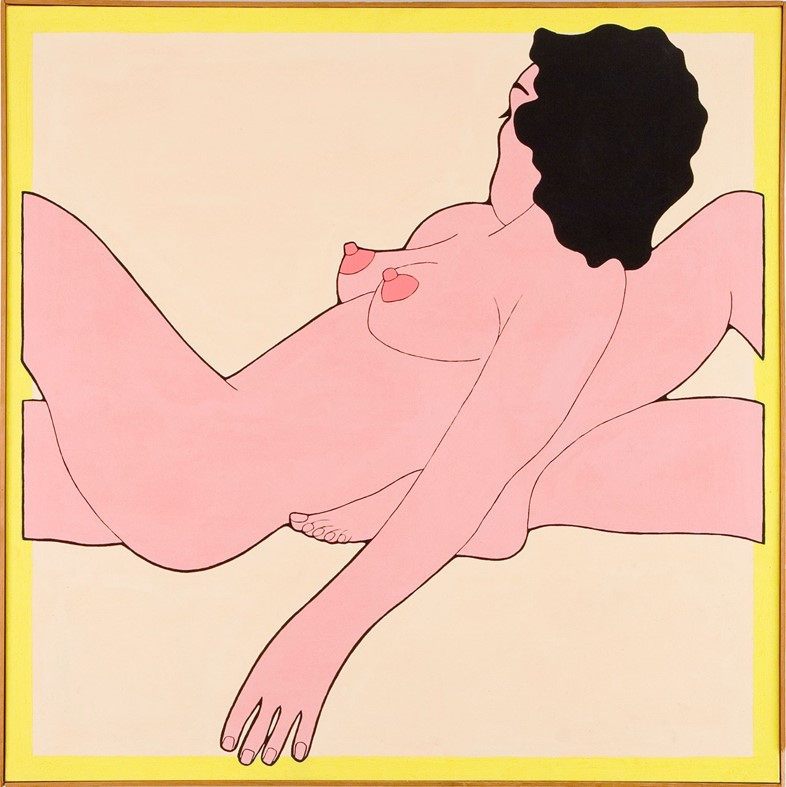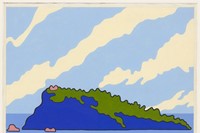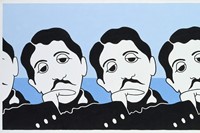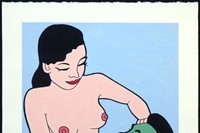The LA-born artist's ice-cream palettes and dry humour have been entertaining audiences for 50 years, and a new London exhibition is set to do the same
"Many people find my pictures funny which I rather enjoy. I think much of my intent is humour," John Wesley, Jack to his friends, said in 1976, according to an essay by Dan Fox. This September, the most significant UK exhibition of the 88-year-old artist’s work to date will open at Soho’s Waddington Custot gallery, and this quote is just one of many included in the exhibition catalogue. The show is set to comprise a selection of paintings and painted objects, from suitcases to motorcycle helmets, each bearing Wesley’s signature repetition of motifs, limited colourways and graphic two-dimensionality. It’s impossible not to be seduced by the smooth flatness and the saccharine palette, but in Wesley’s case, humour is the element that destabilises the viewer, packing a self-critical punch.
Wesley was born in Los Angeles in 1928, and began painting in 1953, working as both an illustrator for an LA-based aircraft company and in a post office as a way to fund his practice – the exposure to the tessellations of stamps and stationery indeed leaving a residue. It wasn’t until 1963 that his career began to take off, however, with his first solo exhibition, which was reviewed at the time by his friend Donald Judd. Over the next 50 years, Wesley would work doggedly, producing more than 50 solo exhibitions, moving from associations with pop art through to what Fox describes as “syncretic pop” – a singular style that merges pop, surrealism and minimalism – without truly being any of them.
Rather than attempt to define his work, the forthcoming exhibition, entitled The Henry Ford Syndrome, considers Wesley’s salient iconography, bringing together large-scale paintings and objects from all over the world. Drawing on a highly personal archive of imagery, from psychosexual symbols to enigmatic landscapes and comic social scenarios, the passing of five decades is almost imperceptible in Wesley’s work – and the source of riotous laughter sometimes ambiguous.
We met Roxana Afshar of Waddington Custot at the gallery to preview some of the works just before they closed to prepare for the installation. “Wesley has always been well supported by U.S. institutions,” Afshar explains, “but this is the first UK solo show of Wesley’s in eight years. For this exhibition we have worked with galleries and private collections to source paintings – one is on loan from Asia – alongside works from our own inventory – many of which have never been shown before in London.”
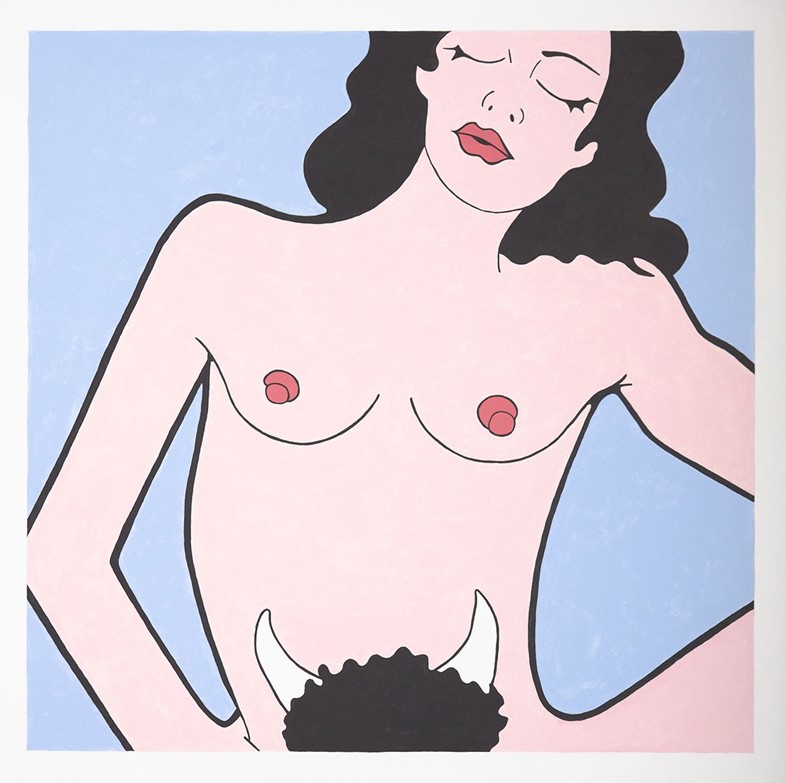
On the use of repetition in the work…
“The title of the exhibition, The Henry Ford Syndrome, refers to the rhythmic pattern of repetition throughout Wesley’s work. It is through repetition that Wesley’s surreal, dreamlike scenarios are constructed. He once said, “If you say foot, foot, foot, foot, foot, foot, foot, foot, foot long enough then foot becomes hilarious…If you paint 40 Nixons it puts Nixon in his place”. To him, repetition is simply funny, and helps to put things into perspective. The exhibition will examine this graphic language and Wesley’s emblematic imagery over the past 50 years. The earliest work is dated 1964, and the latest is 2011 – and repetition has been constant throughout.”
On defining periods in Wesley’s oeuvre…
“Although Wesley has consistently worked with his distinctive palette, the colours vary slightly; for example the sharper, colder blue and paler pink from the 1960s – but apart from that, the subject matter and the rigorous graphic structure have been pretty constant.”
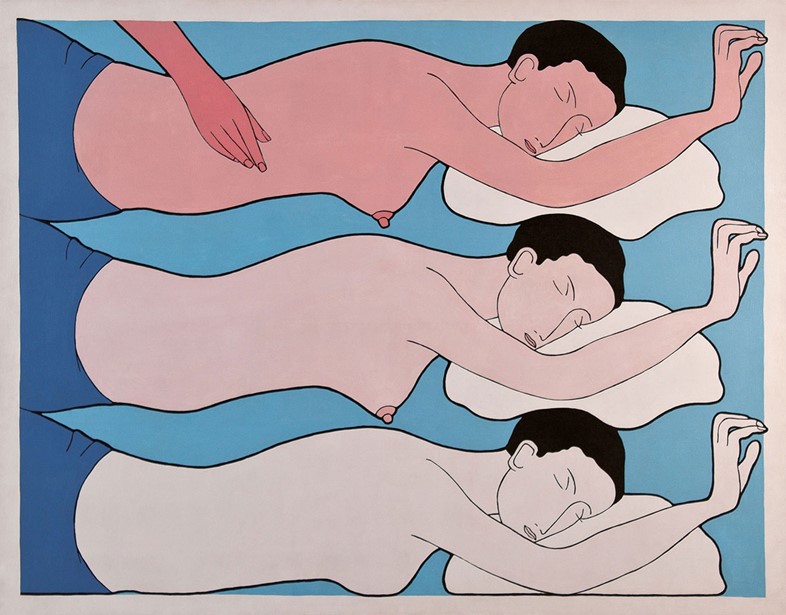
On defying genres…
“I think, in a way, he is making a commentary on the world, but he never really claimed to. He is someone who talks very rarely about his work, so there’s a lot of interpretation. Wesley’s work exists somewhere beyond the labels and is much more aligned to contemporary artistic production in refusing categorization; favouring a timeless space over participation in popular culture. He uses technical aspects of pop art – flat images, strong lines, rhythmic repetition – but the subject is often surreal, and the limited colour palette minimal. Wesley has created an amalgamation of all these movements, reinventing a very distinguishable imagery, which makes him a unique character in post-war art history. Wesley doesn’t take anything too seriously, nothing is certain and the work continues to surprise us; that’s why we wanted to show his work.”
On the quintessential components of a John Wesley piece…
“The cool palette of colours: pastel blue, baby pink, peppermint. His appropriation of Rococo idiom. The flatness. The clean black line, carefully achieved. I’d say this is Wesley’s identifiable visual formula, combined with the repetition and the presence of subtle flaws or enigmatic subjects within peculiar scenes making you feel like something is slightly off!”
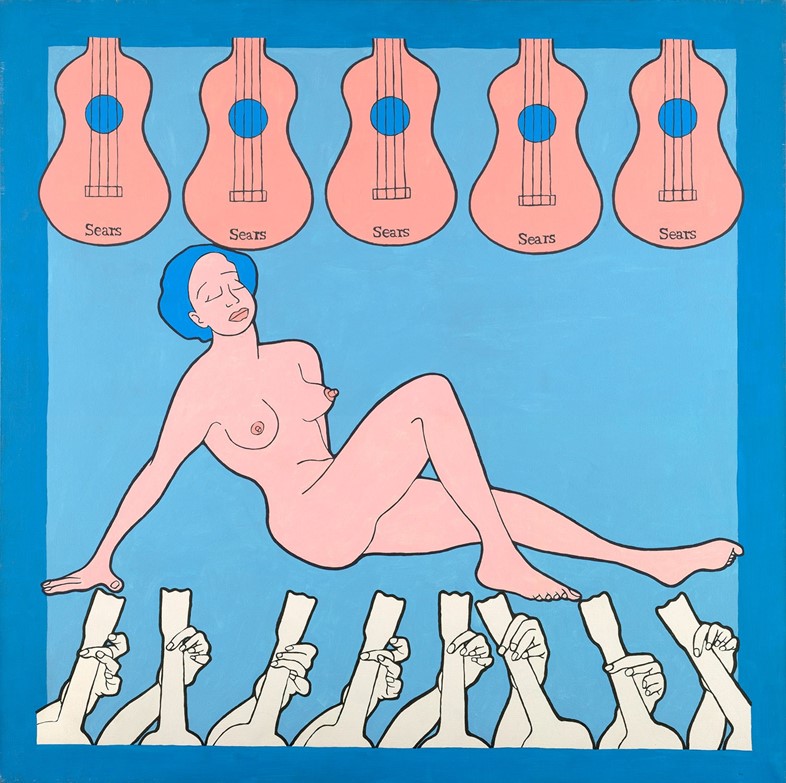
John Wesley: The Henry Ford Syndrome runs from September 16 until October 22, 2016 at Waddington Custot, London.
